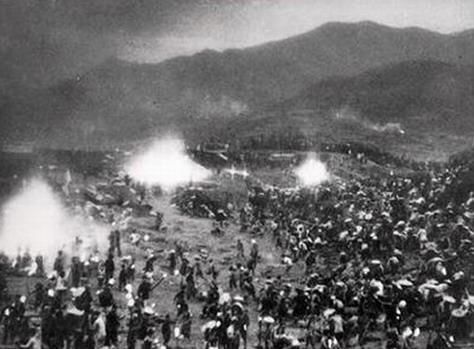|
Life expectancy, adult literacy rate, infant mortality rate, maternal mortality rate, access to improved water sources, and percentage of undernourished population. |
Card: 2 / 48 |
|
Fill in the blanks: Economic reforms were implemented in China in ___, in Pakistan in ___, and in India in ___. |
Card: 3 / 48 |
|
True or False: India, Pakistan, and China adopted similar economic models for their growth strategy after independence. |
Card: 5 / 48 |
|
False. India and Pakistan adopted a mixed economy model, while China adopted a command economy model. |
Card: 6 / 48 |
|
What common successes have India and Pakistan achieved in their economic development? |
Card: 7 / 48 |
|
A substantial rise in GDP per capita, self-sufficiency in food production, a decline in the dualistic nature of the economy, and a considerable reduction in the incidence of poverty. |
Card: 8 / 48 |
|
Riddle: I am a measure of health, the more I am, the better you live; I track how long people stay alive. What am I? |
Card: 9 / 48 |
|
What are the common failures of India and Pakistan in their economic development? |
Card: 11 / 48 |
|
Relatively slow pace of GDP growth compared to China, poor performance in HDI ranking, dismal fiscal management, and prioritizing political survival over good governance. |
Card: 12 / 48 |
|
Fill in the blank: The percentage of the population having access to improved water sources should be ___ the better. |
Card: 13 / 48 |
|
Which regional economic groups are mentioned as examples of countries forming alliances for growth? |
Card: 15 / 48 |
|
Riddle: I was established in 1949, my strategies for growth were planned in advance; I’m known for my command, not a mixed stance. What country am I? |
Card: 19 / 48 |
|
To support the development of a new trade system that accelerates economic growth. |
Card: 22 / 48 |
|
Fill in the blank: The Great Leap Forward campaign initiated in China aimed at ___ the country on a massive scale. |
Card: 23 / 48 |
 Unlock all Flashcards with EduRev Infinity Plan Starting from @ ₹99 only
|
|
True or False: The commune system in China allowed individuals to privately own and cultivate land. |
Card: 25 / 48 |
|
Increase foreign investment by establishing regions with different economic laws. |
Card: 28 / 48 |
|
Riddle: I am a program that sought to transform agriculture and industry simultaneously in China after 1958. What am I? |
Card: 29 / 48 |
|
Fill in the blank: Several poverty alleviation programs in India aim to improve ___ and reduce poverty. |
Card: 31 / 48 |
|
Fill in the blank: The dual pricing system in China's reforms required farmers to buy and sell fixed quantities at government-fixed prices and the rest at ___ prices. |
Card: 37 / 48 |
|
What were the major areas of focus in Pakistan's economic reforms during the 1980s? |
Card: 39 / 48 |
|
Fill in the blank: Pakistan introduced tariff protection for the manufacturing of consumer goods, together with direct import controls on ___ imports. |
Card: 41 / 48 |
|
True or False: The per capita gain output in China in 1978 was higher than it was in the mid-1950s. |
Card: 43 / 48 |
|
False. The per capita gain output in 1978 was the same as it was in the mid-1950s. |
Card: 44 / 48 |
|
Riddle: I am a period where rural poverty declined by 85% and significant reforms began in China, yet I coincide with India's slow growth. What am I? |
Card: 45 / 48 |
|
Both countries have succeeded in more than doubling their per capita incomes despite high population growth. |
Card: 48 / 48 |



























